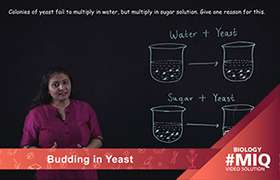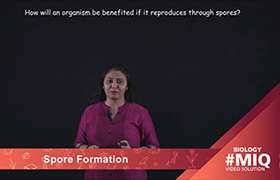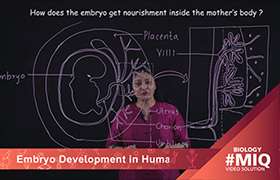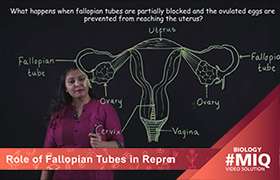CBSE Class 10 Answered
explain different types of placentation in detail
Asked by SIVENDU SIVENDU | 19 Jul, 2012, 06:29: PM
The arrangement of ovules within the ovary is known as placentation. The different types of placentation found in plants are:
- Basal placentation: The placenta is at the base (bottom) of the ovary and a single ovule is attached to it. Example: Sunflower, marigold.
- Parietal placentation: Here ovary is one-chambered but it becomes two- chambered due to the formation of the false septum. The ovules develop on the inner wall of the ovary or on peripheral part. E.g. - mustard and Argemone.
- Axile placentation: The placenta is axial and the ovules are attached to it in a multilocular ovary. Example: China rose, tomato and orange.
- Free central placentation: The ovules are borne on central axis and septa are absent. Example - Dianthus and Primrose
- Marginal placentation: Here the placenta forms a ridge along the ventral suture of the ovary and the ovules are borne on this ridge forming two rows. It is characteristic of legumes like pea.
Answered by | 20 Jul, 2012, 11:49: AM
Application Videos
Concept Videos
CBSE 10 - Biology
Asked by ar3886267 | 01 Mar, 2024, 05:57: PM
CBSE 10 - Biology
Asked by janu69659 | 28 Feb, 2024, 09:12: PM
CBSE 10 - Biology
Asked by baibhabsenapati | 16 Feb, 2024, 01:29: PM
CBSE 10 - Biology
Asked by mohammedtaiyabt | 14 Feb, 2024, 05:42: AM
CBSE 10 - Biology
Asked by ananyapatharidav | 06 Feb, 2024, 06:51: PM
CBSE 10 - Biology
Asked by artikumari118 | 05 Feb, 2024, 10:45: AM
CBSE 10 - Biology
Asked by muskan.bharti.dih | 08 Nov, 2023, 11:53: AM
CBSE 10 - Biology
Asked by saritadiwakarjha | 09 Mar, 2023, 02:45: AM
CBSE 10 - Biology
Asked by ten.foundation | 15 Jul, 2022, 02:32: PM
CBSE 10 - Biology
Asked by winkeyroy98 | 15 Jul, 2022, 02:30: PM











